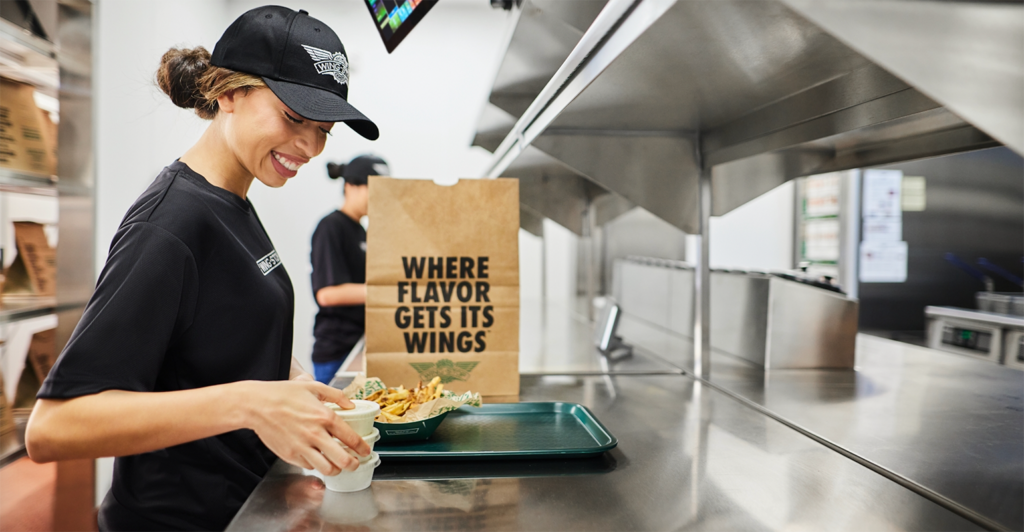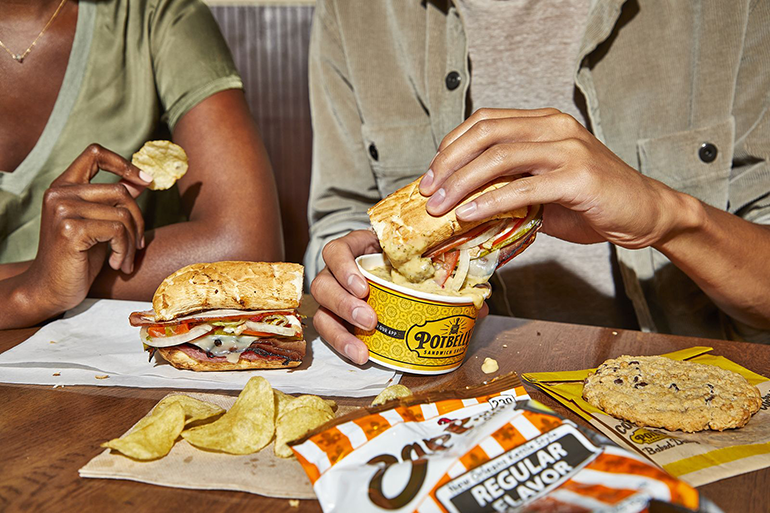Fast-casual emerges as the sweet spot for restaurant industry growth
The segment is overperforming on sales and traffic.
22 May 2024
Share this exclusive content from Saladplate

Photo Caption: Wingstop said transaction growth drove a 21.6% same-store-sales boost in the first quarter.Photo Credit: Wingstop
What does “growth” mean for restaurant businesses in this “new normal”? Find out below and throughout the Growth Report:
• A look at today’s growth pinch points: financing, labor, real estate
• More than ever, growth is impacted by geographic variations
• How four concepts are approaching their growth strategies
The fast-casual category first became a thing in the 1990s (about the time Chipotle emerged) and came of age in the 2010s following the Great Recession, when consumers wanted more bang for their buck in the form of value, speed, and quality. The category came to be defined as a sort of elevated QSR but without the full-service component of casual dining.
Fast forward to this post-pandemic environment and fast casual has become a rare sweet spot of growth for the industry as price point lines continue to blur between segments. In the past several quarters, as inflation-weary consumers pull back on visits to most casual-dining concepts and some quick-service concepts, fast-casual players like Potbelly, Chipotle, Wingstop, CAVA, and Shake Shack have enjoyed traffic lifts — in some instances quite significant. The segment has also outperformed on sales. According to recently released Technomic data, fast-casual sales in 2023 grew by 11.2%, followed by quick-service sales at 7.9%. Family-dining restaurants grew by 5.7% and casual-dining chains grew by 4.7%.
“LSR (limited-service restaurant) momentum continues to accelerate, mostly driven by fast casual,” said Technomic vice president Rich Shank during a presentation at the Restaurant Leadership Conference.

Photo caption:In the past several quarters, fast-casual players like Potbelly have enjoyed traffic lifts.. | Photo Credit: Potbelly
The segment’s forecast ahead is just as sunny; according to a new report from Allied Market Research, the global fast-casual restaurant segment was valued at $124.5 billion in 2022 and is projected to reach $337.8 billion by 2032, representing a compound annual growth rate of 10.4%. Technavio research is even more bullish, predicting a CAGR of 11.5% through 2027 in the segment.
Investors have taken notice as average share prices in the segment have far outpaced those from QSR and casual-dining peers. Citi restaurant analyst Jon Tower recently said the fast-casual segment presents a strong long-term investment opportunity, as it’s still in its “infancy” and appeals to younger and wealthier demographics. Lauren Fernandez, CEO and founder of investment firm Full Course, adds that she “loves” the fast-casual space as the industry navigates sales headwinds.
“There is less compression in times like these, and it’s starting to impact how people eat. In that environment, I feel bullish on fast casual, but pragmatically so,” she said, adding that fast casual is a primary focus for her firm’s investments.
Fernandez said fast casual has a shorter payback period compared to its QSR and full-service peers, as well as a more flexible labor model. She believes it’s also easier to franchise and more amenable for bolt-on revenue streams such as delivery and catering. Consumer strategist Lisa Miller agrees that fast casual is playing a “unique role right now.”
“Some are leaning into convenience, some are leaning into the experiential side,” she said. “The winners will be the fast casuals that are experience-oriented because many casual dining restaurants are giving up that dine-in occasion in favor of off-premises growth.”

Source: Nation’s Restaurant News



